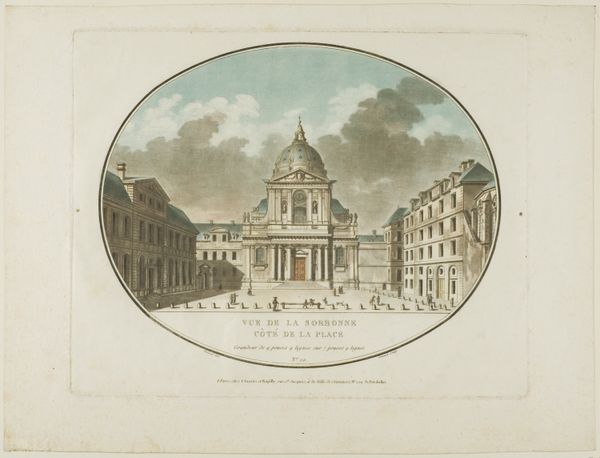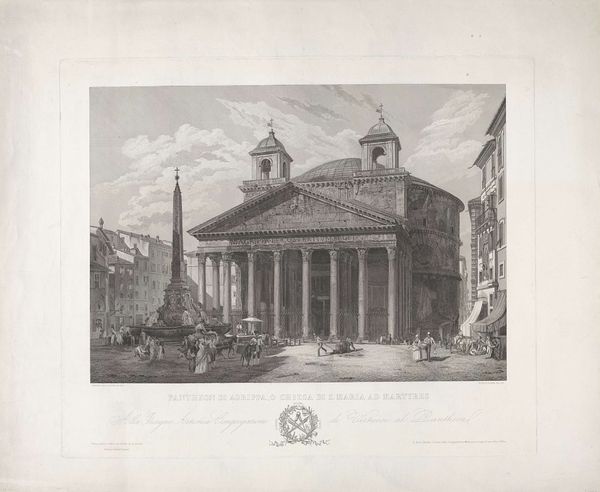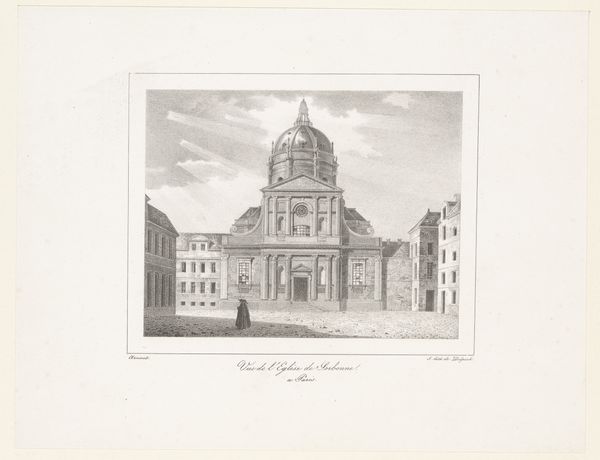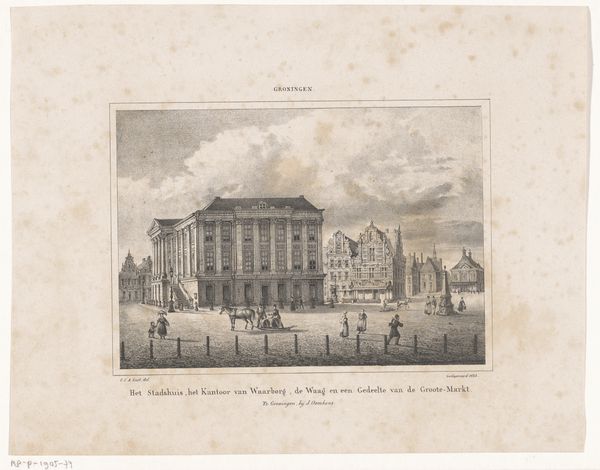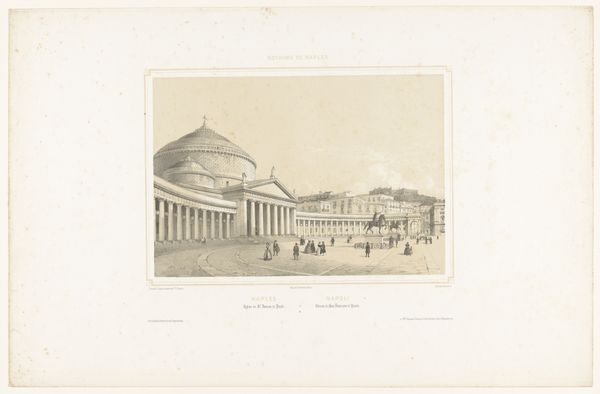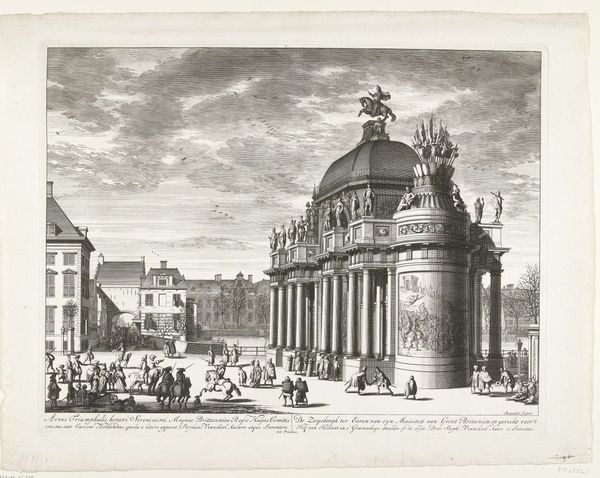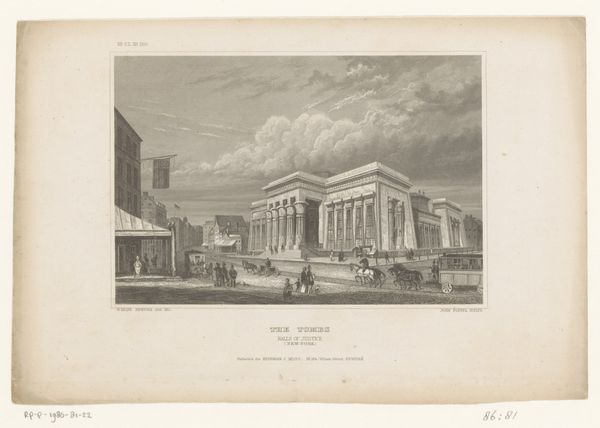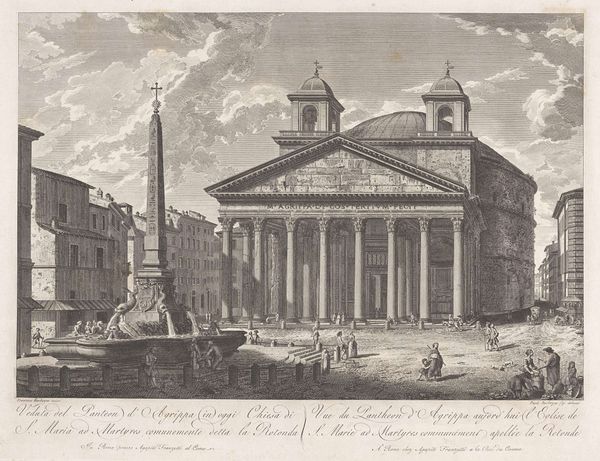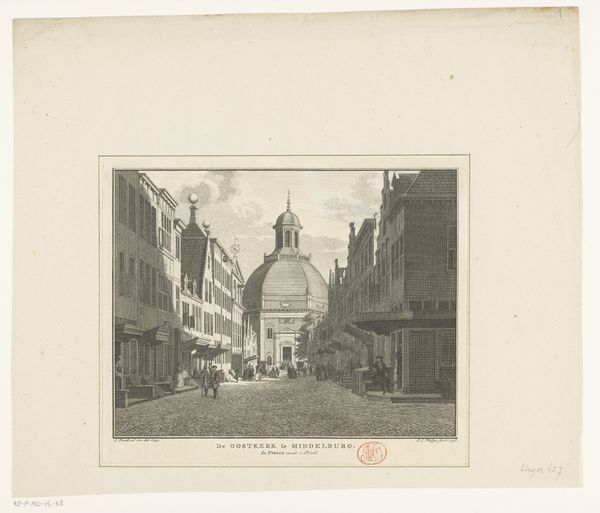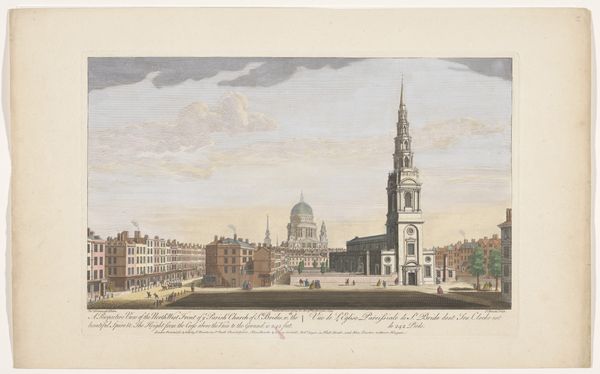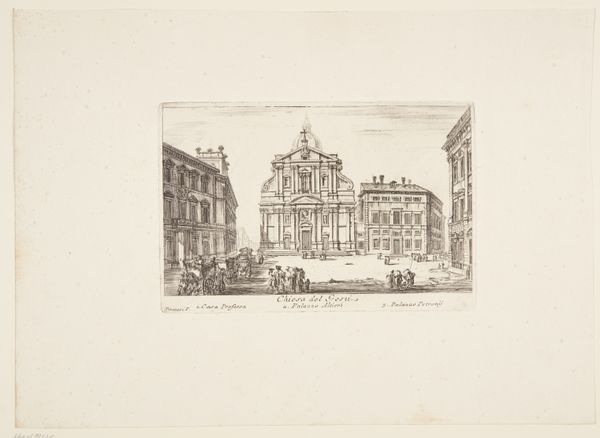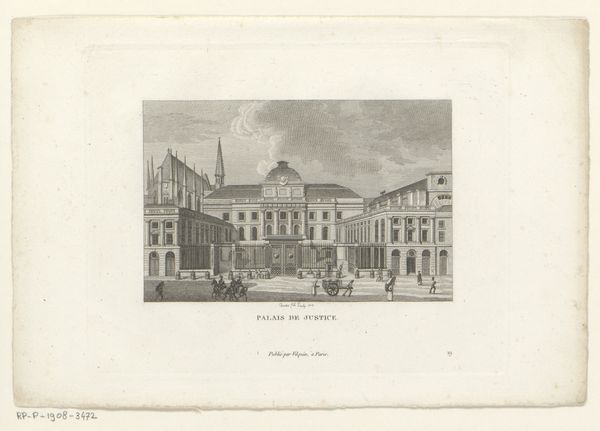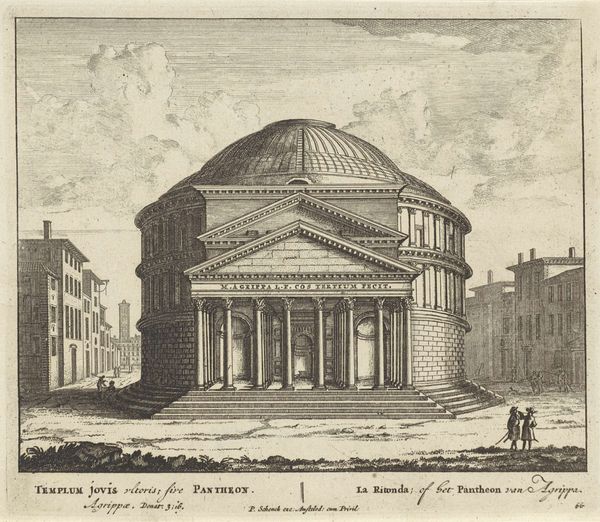
The Pantheon, plate twenty-six from the Ruins of Rome Possibly 1798
0:00
0:00
drawing, print, paper, architecture
#
drawing
#
neoclacissism
# print
#
landscape
#
paper
#
cityscape
#
architecture
Dimensions: 330 × 448 mm (sheet)
Copyright: Public Domain
M. Dubourg's aquatint, made in the early 19th century, presents us with the Pantheon as a spectacle of Roman history. These prints were made for British elites who sought to consolidate their own power with reference to the glories of the past. The image creates meaning through visual codes, cultural references, and historical associations. The Pantheon, with its classical portico and dome, stands as a symbol of architectural achievement. The presence of the obelisk, repurposed from ancient Egypt, speaks to Rome's imperial reach through time and space. However, the mundane details of contemporary life are visible in the figures milling around the fountain and the market stalls around the perimeter. The picturesque aesthetic was fashionable in this period, which balanced the awe of history with the comfort of the present. Detailed visual analysis combined with an understanding of the Grand Tour, the publishing industry, and the British class system can tell us more about the cultural role of this print.
Comments
No comments
Be the first to comment and join the conversation on the ultimate creative platform.
